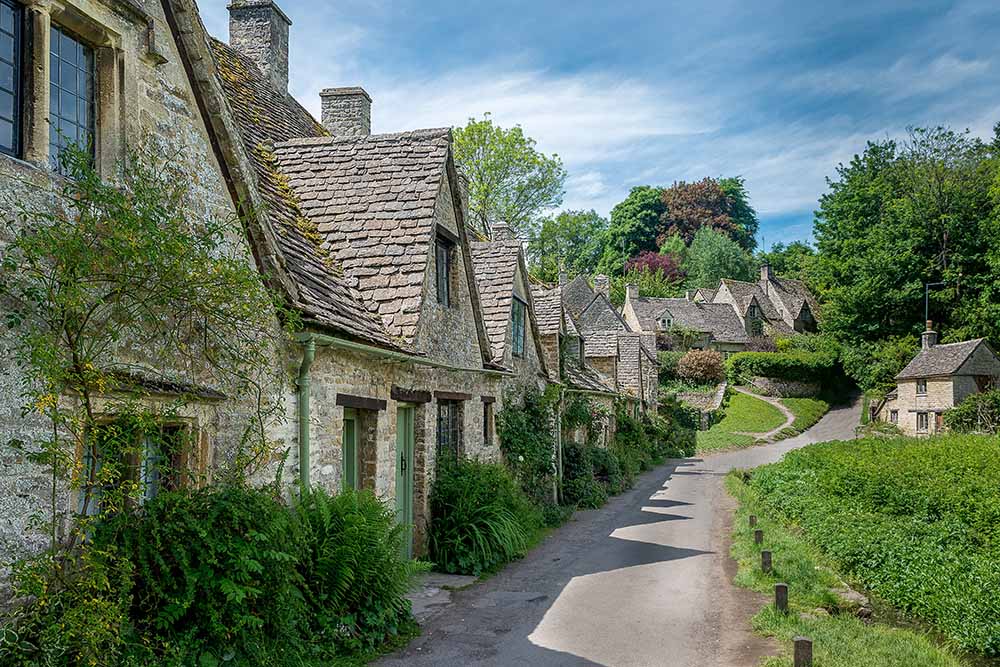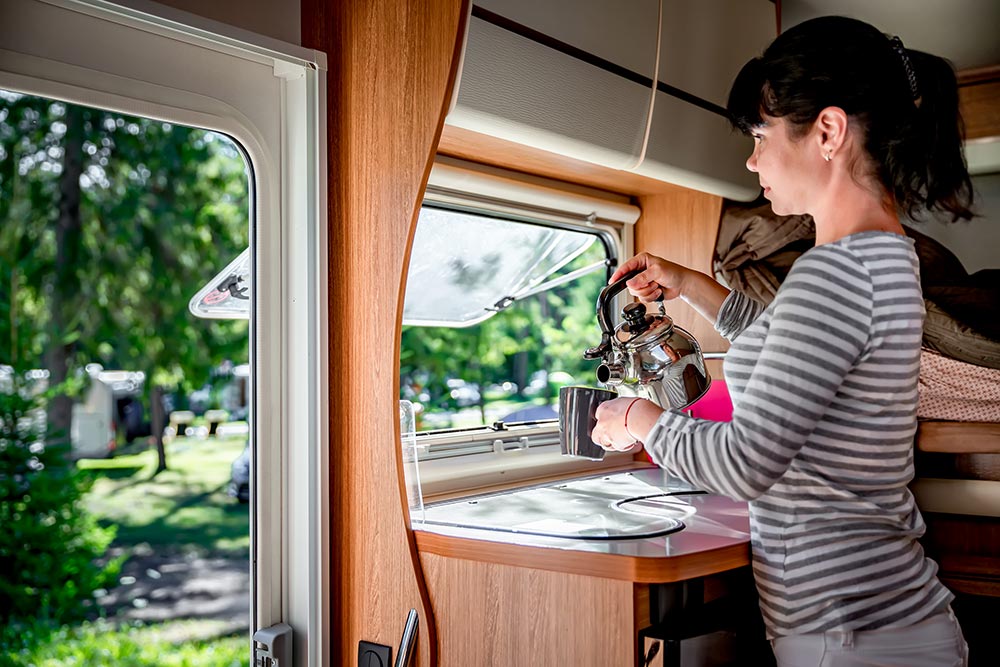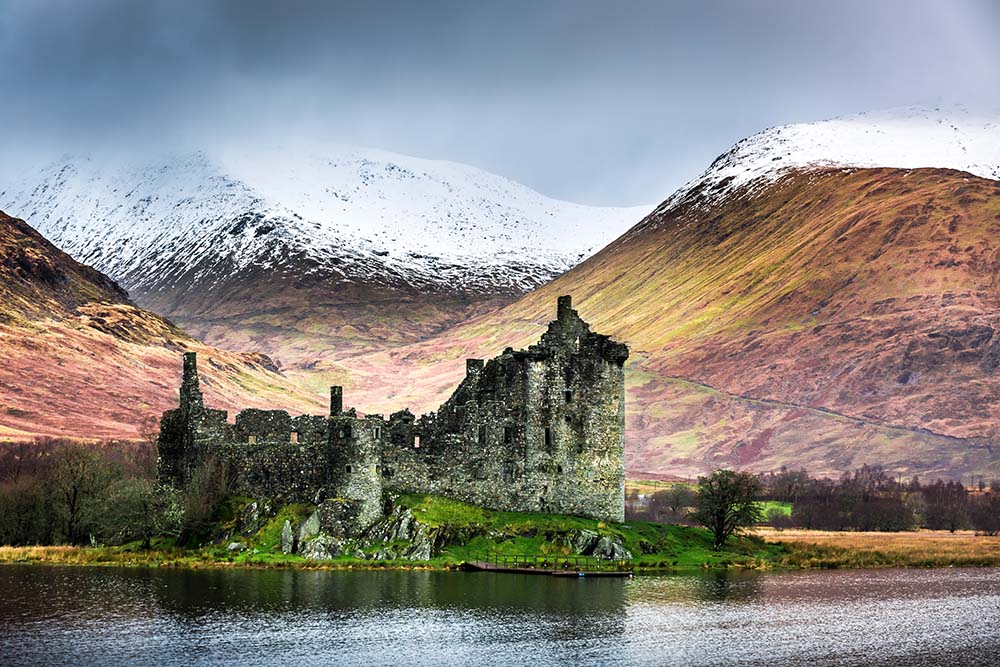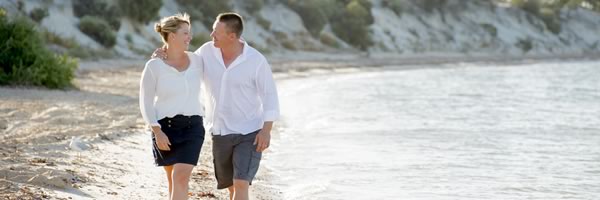Caravanning in the Cotswolds

There are very good reasons why so many of the rich and famous have homes in this place. The Cotswolds are at the very heart of England and offer a quintessential idyll of all that’s comfortably easy in a countryside lifestyle.
Caravanning in the Cotswolds
But you don’t have to live there to enjoy these many and varied delights – it is a haven for caravanners. So, where can you find the Cotswolds and what can you do once you get there?
The Cotswolds cover a surprisingly large area – a total of 790 square miles (2,038 square kilometres) with land in no less than six counties (Bath and NE Somerset, Oxfordshire, Gloucestershire, Warwickshire, Wiltshire, and Worcestershire). This makes it the biggest Area of Outstanding Natural Beauty (AONB) and the third-largest protected terrain in England.
Things to do
Towns and villages
Thanks to the large tracts of land included within the Cotswolds, there are a host of attractive and historic English towns to visit. Among them, you will find tourist hotspots such as Bath, Cirencester, Stow-on-the-Wold, Cheltenham, Stratford-upon-Avon, Bristol, Oxford, and Swindon.
The real treasures, however, are probably away from the major settlements and are instead found in the smaller, picture-postcard villages of honey-stoned cottages such as Bilbury, Burford, Bourton-on-the-Water, and many, many others.
History
Given its place at the very heart of England, it is hardly surprising that the Cotswolds also include its share of historic estates, castles, and monuments.
While history buffs will be swotting up on all the important dates and events, other visitors to places such as Berkeley Castle, Blenheim Palace, and Sudeley Castle can engage in the gentler pursuit of simply admiring the timeless architecture and marvelling at the beautiful gardens.
Activity
But your visit needn’t be all stately and sedate – the Cotswolds offer a glorious stage for all manner of activities, adventures, and exercise.
You might want to try exploring the quiet country lanes on a bicycle or even walk the length of the Cotswold Way – the full trail winds an impressive 102 miles (164km) between Chipping Campden in Gloucestershire to the Roman city of Bath in Somerset. The route is not only scenic but will give you a real sense of stepping back in time as you pass through its historic villages, ancient woodlands, and rolling hills.
Whether you’re a beginner or well-acquainted with equestrian sports, horse riding is another way of enjoying this gem of rural England.
Festivals and events …
As you arrange your itinerary of visits to the wealth of market towns throughout the Cotswolds, remember that a host of events and festivals are held throughout the year at many of these places.
One of the best-known is the Cheltenham Literature Festival but there are other, quirkier events such as the Tetbury Woolsack Races, the Moreton Show for a traditional agricultural and horse show proudly hosted by the town of Moreton-in-the-Marsh. Or even the – positively hair-raising and neck-breaking Gloucestershire Cheese Rolling competition down the 200 yard (180m) drop of Coopers Hill.
… and relax!
Remind yourself that you’re at home with the rich and famous when you visit the Cotswolds. So, that means a spot of pampering will not go amiss.
As befits those who will have plenty of leisure time on their hands, spas and wellness centres are dotted throughout the Cotswolds and offer the opportunity to unwind in tranquil surroundings and luxuriate in indulgences ranging from full body treatments, to massages, and facials.
Staycation destinations for this summer

If you have a touring caravan, it might seem that summer lasts longer and longer each year. With summers stretching further and further into the year, therefore, practically any time represents a golden opportunity to reacquaint yourself with just some of the riches you may find in just about any corner of the British Isles.
Destinations
Post-pandemic, you can again be reasonably comfortable about keeping you and yours as safe on holiday as you are at home. Once more, you are free to open and explore the veritable treasure trove of potential destinations for your staycation treat.
It’s not as though you’ll ever be stuck for choice. Just about every region, county, landmark, and town across Great Britain has its own particular draw and appeal. So, let’s take a virtual tour around the country and identify some of your jumping-off points.
The Southeast of England
The Southeast of England is the closest these islands come to our neighbours on the continent, so it is little wonder that this is where you may find some of the oldest remaining evidence of invasions from the likes of the Vikings, the Romans, and the Normans.
A relatively unexplored historical gem from that part of the world is the Isle of Thanet, where there is still plenty of evidence from both the Viking and Roman invasions.
The Viking Coastal Trail, for example, takes you the entire length of Thanet’s coastline from Margate in the north, down to Ramsgate, via Broadstairs, and then inland through many a picturesque village.
You might be glad of the bike rack you mounted on your caravan since the trail is some 32 miles long – a good cycling distance but one you might want to break into several sections if you are on foot.
The Southwest of England
If it’s a staycation, in summer, with a caravan, you are almost certain to be drawn to the Southwest of England – along with what might feel like the whole of the rest of the country!
It’s certainly not difficult to understand the immense popularity of the Southwest’s beaches, shimmering sands, and glistening waters on a sunny summer’s day. With your caravan in tow, though, you can kiss goodbye to the crowds, head inland, and discover a different kind of Devon or Cornwall.
For somewhere different this year, therefore, why not explore the less well-known Goss Moor National Nature Reserve – right in the middle of Cornwall? Whether you are coming in from Exeter or St Austell, the world-renowned Eden Project is only a short drive away and offers something pleasantly different from the buckets and spades of the innumerable beaches.
Wales
Is it the Eyri National Park (previously Snowdonia National Park of North Wales); the Gower Peninsula; or the Pembrokeshire coast of South Wales that’s likely to host the better staycation?
This year, both North Wales and South Wales have seen more than their fair share of visitors, day-trippers, and holiday home renters. Delightful as Snowdonia, the Gower and the Pembrokeshire coast might be, therefore, perhaps now is the time to discover the hinterland of mid-Wales – the very heart of the Principality.
Here, you’ll find one of the great unspoilt natural landscapes of the UK, where the Cambrian Mountains give rise to two major rivers – the Severn and the Wye.
The mid-Wales Marches are a magical land of small market towns, country houses, gardens, and mile upon mile of walking and cycling trails. Why not make your base at the market town of Machynlleth and explore the surrounding countryside from there?
The Midlands
The Midlands are not just for travelling through en route to elsewhere – the heart of England has surprisingly open and attractive countryside of rolling hills and fertile farms – and with caravan sites aplenty while you rest up for the night or establish your base for exploring the delights of this central region.
The indisputable draw and attraction, of course, is likely to the birthplace of the bard William Shakespeare, whose Stratford-upon-Avon continues to evoke the times he lived in the sixteenth century.
The North of England
Just as the family has finished arguing over North or South Wales, and you’ve already driven through the Midlands, so you might introduce another bone of contention – the Northwest of England’s Lake District or the Northeast counties of Northumberland and Durham.
Once again, there’s so much to be said for both the Northwest and the Northeast that you might want to follow the road less travelled and opt to explore the northern tip of the Pennine Range.
It’s one of the most remote parts of England, with Kielder Water being the largest man-made lake in Northern Europe, surrounded by England’s largest forest – it’s truly a natural paradise for exploring on foot or by bike or challenging yourself in one of the many available water sports.
After a strenuous day of outdoor activity, in the quiet of the evening, you might spark another family debate about whether the nearby border towns of Hawick and Jedburgh are in England or Scotland – in fact, they’re both in Scotland.
Scotland
And, so, across the border we go into Scotland – a staycation that makes you feel that you’ve practically come abroad.
You asked us for inspiration in our suggested destinations, but Scotland is a nation unto itself – with more history, landmarks, geography, forests, mountains, and lochs than you could shake the proverbial stick at. So, we’ll dodge any attempt to highlight the best of an already stunning bunch by suggesting just some of those likely to sound most familiar:
- Edinburgh – the capital, of course;
- Glasgow – not just historic, but now a major European capital of culture in its own right;
- The Highlands – rugged, bleak, romantic, and with a brooding air of mystery;
- Loch Ness – you know that “Nessie” is there, and maybe you’ll be the one to finally capture him (or her!) on film;
- Isle of Skye – gateway to the Western Isles.
Northern Ireland
It’s part of the UK – so, yes, your holiday in Northern Ireland counts as a staycation.
For many of the UK’s caravan owners, however, the trip to the province certainly counts as a route less travelled – and all the more eye-opening and exciting for that. You’ll probably need to do a little homework getting to know just something that the six counties (Antrim, Armagh, Down, Fermanagh, Londonderry and Tyrone) all have to offer – and a good place to start is the official Discover Northern Ireland website.
It’s a compact Province – taking only around two hours to drive from one end of it to the other. If you want to tack on some international travel, of course, then it’s easy enough to hop across the border into the Republic of Ireland.
There’s natural beauty galore – not to mention the castles that survive its turbulent and troubled history. The City of Derry is one of the most complete examples of any European walled city.
The museum that goes by the name of Titanic Belfast is a World’s Leading Tourist Attraction.
“Life is like a box of chocolates”
To borrow a quote from film’s Forrest Gump, your staycation choices in the UK can be many and varied. Surprise yourself and discover some of the less visited corners of the country. Wherever you go, you’ll realise that “Life is like a box of chocolates. You never know what you’re gonna get”.
Mis-sold statics, no caravans on historic site, riverside planning application, help needed for those without off-road EV charging

Do you have a spare moment or two for some light reading while you relax on the threshold of your caravan? Then read on for a glimpse behind some of the headlines currently making UK caravanning news.
Buyers mis-sold holiday caravans as full-time homes
One of the questions we’re often asked is whether owners of static caravans bought as second or holiday homes can live there permanently all year round.
The answer inevitably depends on the particular local authority licensing held by the caravan park owners. Unless the park is specifically licensed for mobile homes that can be occupied 365 days a year then the answer to those buying a static holiday home is no, it cannot be occupied as your permanent address.
That fact was made painfully clear in a recent report by the BBC recently detailing the disappointments suffered by numerous correspondents who claim to have been cheated out of their life savings after being hoodwinked into buying a static caravan as a permanent – often retirement – home.
The official government website warns holiday homeowners that they could be forced to leave the site if they are living on one without the necessary licence and local authority planning permission. Nevertheless, the BBC estimates that “thousands” are living permanently on sites that are licensed only for holiday use.
Read our FAQs section and find out more about living permanently in a static home and the insurance implications here.
Plans for caravan park on medieval site refused
Yorkshire’s East Riding Council Planning Authority has turned down an application to develop a medieval monument as a 64-pitch caravan site, according to a report by the BBC last month.
Fort Paull – near Kingston-Upon-Hull – was built by the Tudor King Henry VIII as a fort and gun battery on the banks of the River Humber. The 10-acre site hosted a military museum until economic difficulties forced the owner, Brian Rushworth, to close it down in January 2020.
Mr Rushworth insisted that he had tried desperately to identify alternative uses for the site but had concluded that a caravan site would best preserve the monument and its surrounding environment.
The local council disagreed and rejected the planning application.
Riverside Caravan Park in Bleadon planning application
Meanwhile, North Somerset Council has been asked to consider an application to extend the permitted opening times for the Riverside Caravan Park in Bleadon, just to the south of Weston-Super-Mare.
In a story on the 9th of March the Western Mercury explained that the park is currently licensed for opening between March and December each year but must be closed to visitors during January and February.
The current planning application aims to lift that restriction so that the park’s 191 static caravan pitches and 61 touring pitches can be used throughout the year.
Greater support for drivers without off-road EV charging required
Do you tow your caravan with an Electric Vehicle (EV)? It is clearly the more environmentally friendly option but a story in Fleet News on the 26th of March echoed a plea for better help and support for all those who live in built-up areas where their only option is to park on the street.
The journal gave the example of the 75% of homes within the circumference of the M25 circular motorway that have no permanent EV charging point in the homes they occupy.
According to Fleet News, the solution lies in granting greater and more widespread ability for residents of those homes to access “cross-pavement” solutions that allow households to connect to a charger at home – while saving the local authorities any additional work in digging access trenches.
Explore Scotland

Cross the border from England or Wales, and you’re immediately into a different country – a country of stunning panoramas, rugged coastlines, and unique cultural traditions and history. In fact, we think Scotland has some of the most spectacular scenery in the world! That’s what makes towing your caravan to Scotland such a rewarding and satisfying adventure.
So, let’s explore just a handful of those glorious opportunities.
Climb the highest peak
If there’s a single vista that best sums up all that you expect Scotland to be it is probably one sketched by stunning hills and mountains – landscapes that are among the most captivating in the world.
If you’re after a personal record, of course, the highest mountain in Scotland – and the whole of the UK for that matter – is Ben Nevis in the Cairngorm range. Its summit is an impressive 4,413ft (1345m) above sea level.
But there is a very wide selection of hills and peaks in this most mountainous part of the UK. There are no fewer than 282 mountains more than 3,000ft high – and charmingly called “Munros”. Other classifications of hills and mountains include Corbetts, The Fionas, Donalds, and Marilyns.
Beaches
Once you’ve scaled the heights it’s time to return to sea-level, of course. And in Scotland, that invites you to explore some of the loveliest, sandy, sheltered, and unpopulated beaches in the world.
These are the stretches of coastline where you can truly relax – just wandering along the shoreline, leaving just your footprints as a fleeting reminder in the pristine white sands.
Just to whet your appetite, the Scottish tourist authorities have published a selection of some of the country’s finest beaches but you’ll almost certainly lose no time in discovering your own favourites, such as:
- East Beach, Lossiemouth
In the north eastern part of the mainland, the harbour at ‘Lossie’ is bordered by two magnificent beaches to the east and west. The eastern beach features charming sand dunes and extensive stretches of white sand, providing a delightful setting for walking the dog or simply taking a leisurely stroll with scenic views overlooking the harbour town.
Alternatively, consider exploring the Covesea Lighthouse located on the western side.
- Rockcliffe Beach, Rockcliffe
Rockcliffe is a picturesque Scottish beach offering a delightful coastal experience. Embark on a leisurely stroll during the morning or afternoon along the wooded coastal pathway spanning approximately 5 km between the villages of Kippford and Rockcliffe.
Along the way, you’ll encounter charming houses, vibrant flora, and playful squirrels darting about. At Rockcliffe, don’t miss the opportunity to visit Rough Island, a bird sanctuary accessible on foot during low tide throughout the year, except for May and June when the birds claim the island as their own.
Perched atop the hilltop lies the ancient citadel, Mote of Mark, believed to date back to the 5th or 6th century.
Woodland walks
Wellness and wellbeing are a pair of terms very much in fashion these days. And the many Scottish woodlands offer the perfect backdrop to calming both mind and spirit in an almost ethereal way.
Scottish woodlands are truly places of wonder. Stroll beneath the leafy canopy or simply while away an hour or two as you rest upon a moss-covered stone – and you’ll come away refreshed and rejuvenated.
· Rothiemurchus Forest, Cairngorms National Park
Located in the heart of the Cairngorms National Park near Aviemore, this forest offers a diverse range of landscapes and wildlife, as well as numerous activities to enjoy.
Explore the enchanting surroundings amidst native Caledonian pine trees, with opportunities for lochside strolls, cycling, hiking, horseback riding, tree-top adventures, clay pigeon shooting, and watersports ensuring there’s never a dull moment.
The forest provides convenient amenities such as caravan and campsites and a reindeer centre. Serving as the gateway to the Cairngorm Ski Centre, it’s a must-visit destination if you find yourself in the Highlands.
- Ariundle Oakwoods, Sunart, North Highlands
Ariundle is a captivating destination to explore year-round, boasting an abundance of primitive plants, diverse wildlife, and breath-taking scenery.
This serene nature reserve stands as a precious remnant of the once-extensive native woodlands that adorned Europe’s Atlantic coastline.
Within this verdant sanctuary, a rich tapestry of mosses, lichens, and liverworts thrives alongside a remarkable assortment of wildlife and insects, including the rare the northern Emerald Dragonfly and the Chequered Skipper butterfly. Keep your eyes peeled for Ariundle’s more elusive inhabitants, such as otters, pine martens and wildcats, who may grace you with a fleeting glimpse.
Visitors can enjoy facilities such as woodland and nature trails, adorned with interpretation boards detailing the area’s history, culture, and wildlife.
History
Scotland boasts a fascinating history and vibrant culture, with ancient castles, historic cities, and traditional festivals waiting to be discovered. Explore Edinburgh’s Royal Mile, visit the medieval Stirling Castle, or experience the vibrant music and dance scene at a Highland Games.
There are places where the land itself seems to have soaked up some of the drama and stored it up for you to witness still today. Feel that history in your very bones as you spend an hour or two on the windswept fields of Culloden retracing the final footsteps of the Jacobite uprising in 1746 as the rebel Scots met their match at the hands of the English army.
Alternatively, feel the eery and enveloping doom of betrayal among the clans as you wander the looming mists of Glen Coe.
Castles
If the landscape fails to paint vivid enough pictures of Scotland’s rich history, its treasure trove of castles will do more than fill any gap. Indeed, you’ll be spoilt for choice because it has been estimated that there are more than 1,500 castles dotted about the country’s rugged landscape.
Since the earliest remaining monuments date back to the 12th century, it is hardly surprising that some lie in ruins. Yet equally surprising is the fine state of repair of some of the best known and majestic of Scotland’s castles – from the iconic Edinburgh Castle to the late Queen’s favourite at Balmoral, from Dunnottar Castle in Aberdeenshire to the home of the Duke and Duchess of Argyll at Inveraray Castle.
Visit a distillery
If you have some time left after cramming so much in to your Scottish adventure, why not visit a distillery? Scotland is renowned for its whisky, and no visit would be complete without a tour of a traditional distillery. Learn about the whisky-making process, sample a variety of single malts, and immerse yourself in Scotland’s rich whisky heritage.
We hope this brief blog has given you some ideas of where to visit in Scotland.
This beautiful country offers a unique blend of natural beauty, rich history, outdoor adventure, and warm hospitality that makes it a must-visit destination in the UK.
Caravan sites for adults
Updated April 2024
Contents
Introduction
The freedom of the open road and the ability to take a second home along with you, towed behind your car, has long appealed to many generations of caravanners.
Over time, however, there has been a marked improvement in the facilities and amenities on offer wherever you choose to pitch your tourer. Well-equipped, comfortable and clean washrooms, electrical and water supply hook-ups, individual drainage points and other onsite facilities grant an especially warn welcome for visitors.
This allows anyone with a touring caravan a far wider range of choice when it comes to choosing a campsite – some of which may be more suitable for certain purposes than others.
These days, for instance, caravan sites for adults only – those above a certain age and unaccompanied by children – may be found all around the UK.
This brief guide suggests why adults only caravan sites might appeal to you and takes a look at just some of those sites on offer, their location and their facilities – you might also want to add to this list any others you have found for yourself.

Why adults only caravan sites
Adults only caravan sites typically place a restriction on the ages of those who may be accommodated. This might be designed to restrict use of the site to those beyond their teenage years and those caravanners travelling without children.
What is to be gained by restricting use of the site in this way? There are a number of advantages:
- first and foremost, perhaps, is the overall atmosphere it is possible to create in the absence of children, youngsters and teenagers – an atmosphere that is generally more tranquil, peaceful and quiet;
- such a sleepy, cosy and tranquil environment might be welcome to the more mature caravanner in the same way that it might strike groups of teenagers or boisterous children as the last place to take a holiday;
- sites for the exclusive use of adults, therefore, are likely to be smaller, more out of the way and set in mostly rural locations;
- that is not to say that the owners of adults only caravan sites have a particular antipathy towards youngsters – indeed many such owners are likely to have children or grandchildren of their own – but there is a recognition that sometimes a break away from home without the young ones in tow might be especially relaxing;
One company that specialises in providing caravan sites for the exclusive use of adults, for instance, reports that the majority of its visitors are parents, grandparents and other professionals who frequently have charge of children during the rest of the year and welcome the chance to enjoy a break in their absence from time to time.
With some of these potential attractions in mind, therefore, let’s take a look at the wide network of adults only caravan sites dotted around the UK.
SW England
Think Cornwall and you might imagine the many thrills and spills of activity holidays on the sea or on land – precisely those attractions most likely to draw the younger crowd; think Devon or Dorset and a quieter, more sedate – not to say sleepy – image might be conjured up.
Throughout the SW of England, however, there are caravan sites catering specifically and exclusively for the more mature visitor.
Where to stay
- The Meadows Campsite is a small, sheltered site for grownups only, within easy striking distance of Pentewan Sands, Charlestown, Mevagissey and the Lost Gardens of Heligan. Describing itself as a “natural” site, The Meadows offers some pitches with electric hookup and others for those who want a “proper” camping experience;
- Ideally placed for many of the attractions of south Devon – from the rugged drama of Dartmoor to the rolling costal paths and sandy beaches of the county – is Moor View Touring Park, near the village of Modbury. The site has a total of 68 pitches, for adults only, all with electric, water and drainage hook-ups.

SE England
The counties of Kent, East Sussex and West Sussex offer a wide range of opportunities for enjoying the best of rural England, its attractive coastline, and the tranquillity of an adults only caravan site.
Where to stay
- The Still Acres Touring and Camping Park has been adults only since 2017. It is a family run site not far from Wealden village in Marden, situated in the heart of the countryside of Kent. There are 30 hardstanding pitches with electric hook-up, shower block which is centrally heated and disabled toilet access. Dogs are welcome and have their own area which is fenced off, where they can run freely. The site is centrally located giving easy access to all that Kent has to offer;
- Bridge Farm House Caravan Site is open to Caravan Club members and adults only. It offers accommodation for a maximum of just five touring caravans in a distinctly rural setting of West Sussex (between Haywards Heath and Burgess Hill) that is peaceful and quiet yet also close to principal attractions of the area.
Wales
Wales has long been a favourite destination for touring caravans – from the green, green valleys of the south to the rugged splendour of the Snowdonia National Park in the north.
Where to stay
- South Wales Touring Park at Llwynifan Farm in Llangennech near Llanelli, in South Wales, offers a quiet haven of peace and tranquillity for exploring the Welsh valleys, the Brecon Beacons and the Gower peninsula. It is a small, family run site offering a maximum of 25 touring pitches, all on hard standing, and ten of which are fully serviced;
- Daisy Bank Touring Caravan Park is set in the heart of mid-Wales – a location that is perfect for exploring the rural countryside of both Powys in Wales, Shropshire in England and all of the Welsh Marches. The seven-acre site makes for a tranquil setting for what is a relatively large caravan site – but for the exclusive use of adult visitors;
- Parc Derwen is a separate, adults only, part of the larger Bron Derw touring caravan park situated between the iconic North Wales attractions of Betws-y-Coed and the mountains of Snowdonia. The Parc Derwen area of Bron Derw has a total of 34 fully serviced pitches for adults only.
Midlands
The heart of England represents an intriguing mixture of industrial heritage and wonderful countryside. When you escape to your peaceful, adults only caravan site, therefore, you may enjoy the benefit of getting away from it all, whilst still being just a stone’s throw from major cities and transport routes.
Where to stay
- Typical of that rural setting close to major amenities is Somers Wood Caravan Park in the midst of the Forest of Arden, which lies between the major conurbations of Birmingham and Coventry. Birmingham city centre is just 30 minutes away, whilst the National Exhibition Centre (NAC) is only a six-minute drive. There are 48 pitches on either grass or hard standing, all have 10 amp electric hook up and four are fully serviced;
- The Turbles Holiday Accommodation and Caravan Site is located in a rural and peaceful location very close to The Malvern Hills on the Castlemorton Common in Worcestershire. Just 6 miles from Malvern town the site offers stunning views out over Malvern and pitches that are well maintained and spacious, with electricity hook-up and water to all pitches;
- Springhill House is one of the Camping and Caravanning Club’s certified sites, a designation given to small, family run sites with accommodation for no more than five touring caravans. This well sheltered site, exclusively for adults, has both hard standing and grass pitches for touring caravans.

East Anglia
For some reason East Anglia tends to be overlooked when it comes to touring with a caravan. For those in the know, and looking for an escape from the crowds, however, this may be no bad thing. In order to make the most of the peace and tranquillity which much of East Anglia has to offer, the counties of Norfolk and Suffolk provide more than their fair share of adults only caravan sites.
Where to stay
- Billed as North Norfolk’s only clifftop park for touring caravans, Sandy Gulls has the further distinction of being for adults only – some peace and quiet, therefore, with which to enjoy the bracing air of the county’s coastline and sandy beaches. All 35 touring pitches have sweeping views of the sea and there is direct access to the beach a short walk away;
- Also in North Norfolk, just six miles from the coast in the countryside setting of the village of Erpingham is Deers Mead Caravan and Camping Park. Pitches on this adults only site are on either hard standing or grass, but all are described as “super pitches” with their own 16 amp electric, water and drainage points, TV point and free WiFi;
- To the south, you might want to take advantage of the small, family run and Camping and Caravanning Club certified site at Frog’s Hall near Suffolk’s historic town of Eye. The site offers just five pitches for touring caravans, for the exclusive use of adults to enjoy the flora and fauna of this quiet corner of Suffolk’s countryside.
NE England
The wild coastline of Northumberland, the peace and quiet of the Yorkshire Dales or the stark beauty of the North York Moors, NE England offers many an escape from the hustle and bustle of the kind of city life you might find, say, in Newcastle.
What better way to enjoy some me-time, therefore, than on a site for your touring caravan which you can guarantee to be free of children and other young people.
Where to stay
- Relax in the quiet hamlet of Thornton le Dale, sheltered from the rugged landscape of the North York Moors National Park at the family run, adults only, Overbrook Caravan Park, close to the town of Pickering;
- Think of freshwater fishing and scenes of perfect tranquillity and relaxation are likely to spring to mind. The adults only Chainbridge Touring Caravan Site, near Berwick on Tweed is only 50 metres from the river from which this border town takes its name – only yards from an idyllic fishing spot. The site offers just 18 pitches, and optional electric and fresh water supply points, with each hard standing pitch spacious enough for your caravan, its awning and your car.

NW England
Caravanning in the NW of England is likely to spell one thing only – the Lake District. But that is a district which spans many different locations, each with its distinct character and charm. Many of these may be enjoyed from the peace and tranquillity of an adults only touring caravan site.
Where to stay
- You might want to start out with a relaxing holiday in the southern part of the Lake District at the adults only Ashes Caravan Park near Kendal. Set in a quiet and peaceful corner of the Lakes, the site is still just a few miles from the main M6 motorway, so readily accessible. Touring pitches are on all-weather hard standing and each has its own electric hookup;
- Larches Caravan Park on the northern fringe of the national park, midway between Carlisle and the coast at Maryport. The minimum age for anyone staying on the site is 18. There are 35 touring pitches are available, each with its own electric hookup.
Scotland
Say that you want a break in your caravan touring Scotland and you have a whole country to explore – highlands, lowlands, lochside and seaside. With such a wealth of different locations in which to relax and unwind it is difficult for this brief guide to do any justice at all to the many adults only sites within Scotland. Here are just a few suggestions.
Where to stay
- In the south of the country, just eight miles from Dumfries is the Red Squirrel Campsite Glenmidge. Surrounded by wooded hills, this small adults only site offers peace, quiet and seclusion. Just as the name suggests, this is one of the few areas of the UK where red squirrels may still be found. The site’s pitches for touring caravans are all on unmarked grass areas;
- If you are in search of some solitude amidst the grandeur of the Scottish Highlands, the place to pitch up might be Faichemard Farm Campsite – a site for the exclusive use of those aged 18 and over. Each of its 35 pitches has an individual character and these are spread generously over a ten-acre site;
- In Perthshire, near the town of Errol, you are likely to share your touring caravan pitch not with children or other youngsters, but free range ducks and hens! This is the Fernlea Caravan Club certified site for adults only. As such, it is restricted to a maximum of just five touring caravans and visitors must also be Caravan Club members.
Summary
Whatever your reasons for wanting to enjoy a holiday free from the intrusions and demands of children and other young people – whether your own or someone else’s – you are almost certain to find a caravan site specifically intended for precisely that purpose in practically any part of the UK.
Hopefully, this guide has provided some insight into just how that demand is already being met in just about any part of the UK you may choose to visit.

